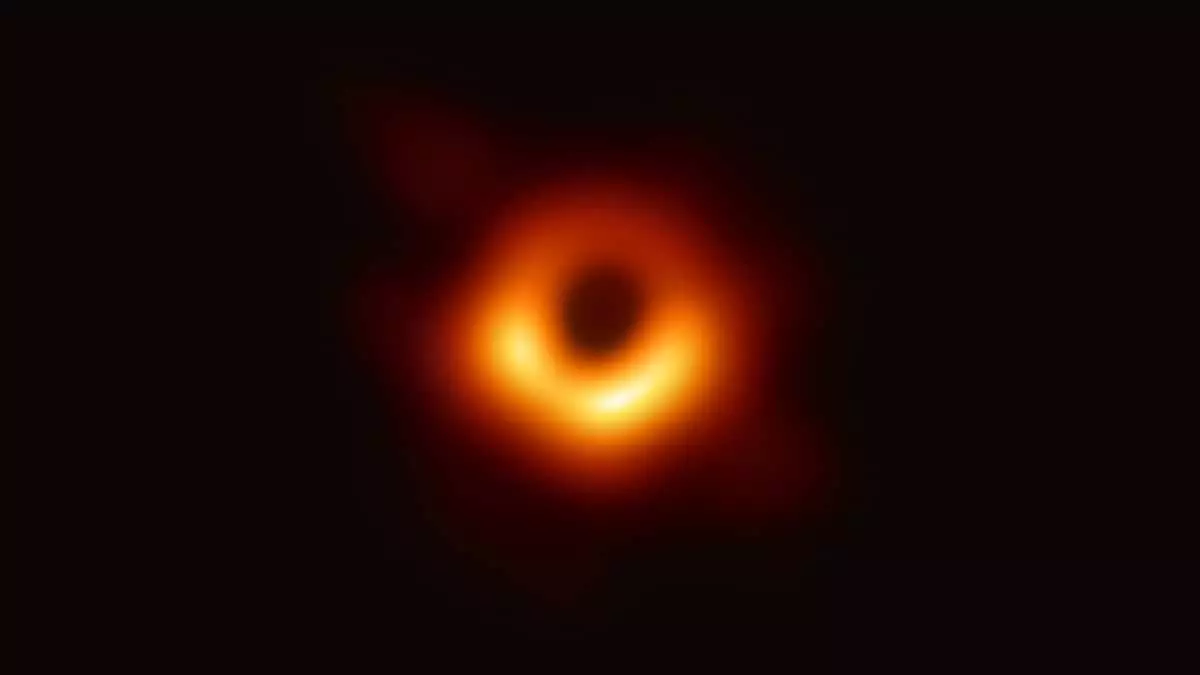Black holes have long been known for their insatiable hunger, devouring stars that venture too close with their immense gravitational pull. However, recent observations have revealed that some black holes prefer to nibble rather than feast. Scientists have discovered a supermassive black hole in a nearby galaxy that engages in a cosmic snack, taking bites out of a star similar in size and composition to our sun. Each time the star approaches on its elongated oval-shaped orbit, the black hole consumes material equivalent to roughly three times the mass of Earth. This intriguing phenomenon offers valuable insights into the behavior of black holes and raises new questions about the nature of tidal disruption events.
Situated approximately 520 million light years away from our solar system, the star in question resides within a spiral-shaped galaxy. Unlike its colossal counterparts, this black hole is relatively small, with an estimated mass a few hundred thousand times larger than the sun. In contrast, the supermassive black hole at the center of our galaxy, known as Sagittarius A*, possesses a staggering mass around 4 million times greater than our sun. Other galaxies house even more massive black holes, hundreds of millions of times the mass of the sun.
Most galaxies harbor central black holes, transforming their surroundings into some of the most turbulent regions in the universe. Drawing upon data from NASA’s Neil Gehrels Swift Observatory, researchers closely monitored the star’s orbit around the black hole. Every 20 to 30 days, the star ventures close enough to have some of its material attracted or accreted by the black hole’s enormous gravitational pull. However, it manages to avoid being entirely torn apart by maintaining a safe distance. This recurring event, known as a “repeating partial tidal disruption,” provides valuable insights into the processes occurring during stellar encounters with black holes.
The Fiery Consequences
As the stellar material falls into the black hole, it reaches temperatures of approximately 3.6 million degrees Fahrenheit (2 million degrees Celsius), generating intense X-ray emissions. These emissions were clearly detected by the space observatory. The star’s gradual decay in orbit brings it ever closer to the supermassive black hole. Eventually, it will approach close enough to suffer complete disruption. However, this cataclysmic event is predicted to unfold over a period of years, or possibly even decades or centuries, and marks a new milestone in the study of black hole interactions.
Unanswered Questions and New Discoveries
The observation of a sun-like star experiencing repeated encounters with a supermassive black hole has sparked a flurry of questions within the field of astrophysics. Researchers are particularly intrigued by the impact of the star’s orbit on tidal disruption events. The study’s co-author, astrophysicist Rob Eyles-Ferris from the University of Leicester in England, emphasizes that the study of tidal disruption events is a rapidly evolving field. This groundbreaking observation demonstrates that significant discoveries can emerge unexpectedly, further fueling scientific curiosity and driving exploration in this captivating field of research.
The recent discovery of a supermassive black hole regularly consuming a sun-like star sheds new light on the behavior of these cosmic gluttons. Instead of devouring stars outright, this black hole prefers a more delicate approach, nibbling on its stellar prey. These observations offer fresh insight into tidal disruption events and raise intriguing questions about the role of stellar orbits in these encounters. As scientists continue to unravel the mysteries of black holes and their interactions with surrounding celestial bodies, new discoveries are bound to capture our curiosity and reshape our understanding of the universe.


Leave a Reply